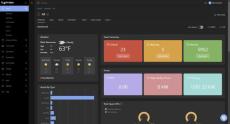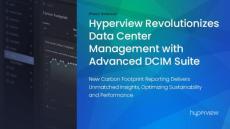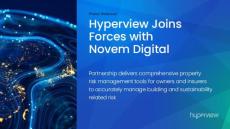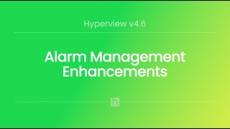|
By Rajan Sodhi
Across regions, the regulatory landscape is shifting dramatically: These regulations signal a new era where energy waste is no longer just an economic concern but a compliance risk. Failure to adhere can result in hefty penalties, restricted operations, and reputational damage.
|
By Rajan Sodhi
DCIM software delivers precise, real-time insights into energy consumption across your data center. Leverage this data to target energy-intensive processes and equipment, taking immediate action to eliminate inefficiencies and reduce consumption.
|
By Rajan Sodhi
DCIM software consolidates all critical information into a single dashboard, giving you a bird’s-eye view of your entire infrastructure. Centralized monitoring minimizes blind spots and ensures real-time visibility of key metrics like power usage, cooling efficiency, and server health.
|
By Rajan Sodhi
This EU regulation introduces requirements for different battery types, with standards that data centers must now follow.
|
By Hyperview
New Carbon Footprint Reporting delivers unmatched insights, optimizing sustainability and performance.
|
By Rajan Sodhi
Vancouver, British Columbia, August 27, 2024 – Hyperview, the leading cloud-based data center infrastructure management (DCIM) platform, is pleased to announce a strategic partnership with Novem Digital, an innovative digital risk management and IoT company.
|
By Rajan Sodhi
We’re excited to share some big updates and enhancements that underscore our dedication to innovation and efficiency. Check out our new Carbon Footprint Reporting add-on feature, a sleek dark mode GUI theme, and major improvements to Business Entity tracking and Dashboard Widgets. Plus, we’ve added new custom components for better peripheral logging and expanded firmware update support for Panduit Gen6 rack PDU products.
|
By Rajan Sodhi
Firmware is the permanent software programmed into a device’s read-only memory. It provides the low-level control for the device’s specific hardware. In a data center, firmware is embedded in various components such as servers, storage devices, and networking equipment. Firmware management involves the processes and tools necessary to update, maintain, and monitor these firmware systems.
|
By Rajan Sodhi
Data centers today are dynamic ecosystems with heterogeneous infrastructures. They encompass a wide array of equipment including servers, storage systems, networking devices, power distribution units, and environmental controls. These assets often originate from multiple vendors and support various communication protocols. Traditional manual asset management methods are ill-equipped to handle this complexity, leading to inefficiencies, inaccuracies, and increased operational costs.
|
By Rajan Sodhi
Data centers typically operate a diverse array of systems including environmental controls, power management, IT service management (ITSM) platforms, and enterprise resource planning (ERP) systems. DCIM software with well-documented, open APIs ensures these systems can communicate and function cohesively. Interoperability fosters.
|
By Hyperview
We're excited to share the new features in Hyperview v4.6, highlighting our commitment to innovation and better functionality. Key updates include improved Alarm Management, featuring a clearer alarm grid and integrated categories for notification policies. Now, you can mute notifications for assets under maintenance or those with too many alerts, and even perform bulk actions on multiple assets. Other cool updates include a widget for easy access to Asset Documents, some tweaks to the Carbon Footprint report, and more.
|
By Hyperview
In this video, we explore how MC-RFID U-Level Asset Tracking, powered by @hyperviewhq, revolutionizes asset management in data centers. With RFID technology, track your assets at the rack-unit level in real-time, eliminating manual data entry and providing instant, accurate audit reports. Learn how this innovative solution: Hyperview's RFID-powered solution simplifies asset tracking, offering instant audits, continuous monitoring, and total lifecycle management.
|
By Hyperview
Hyperview's Jad Jebara talks about our shift to a Product-Led Growth (PLG) strategy, letting customers get started in minutes instead of months and saving costs. By focusing on the customer and the product, success naturally follows.
|
By Hyperview
It all begins with recognizing the interconnected relationship between financial performance, social equity, and environmental impact. Hyperview CEO, Jad Jebara talks about the data center movement towards a greener future.
|
By Hyperview
AI is the buzzword of the year for good reason—it's transforming industries, including data centers. Hyperview CEO, Jad Jebara explains how AI is tripling data center capacity, solving industry challenges, and why this is just the beginning.
|
By Hyperview
@hyperviewhq CEO Jad Jebara: "If you're someone in the industry or who has experienced DCIM software in the past, you would know that it can be a PAIN. But for those who are unfamiliar, let's break it down and discuss how a modern DCIM solution can transform your operations.".
|
By Hyperview
Version 4.5 introduces a new add-on feature, Carbon Footprint Reporting that lets you keep an eye on the carbon footprint of any location with ease. Dive into the details of rack workloads, assess how your average offset percentages are shaping up, and get specific insights for each location. Plus, we've added a sleek dark mode option for Hyperview, introduced two fresh dashboard widgets, and rolled out a bunch of improvements to enhance your experience.
|
By Hyperview
Data centers are major energy consumers, emitting CO2 equivalent to 13 million cars in North America alone. Emissions arise from primary operations and auxiliary systems like cooling and backup generators. Inefficiencies in IT equipment management and a lack of detailed emissions analysis hinder targeted reduction strategies. So, is it possible to make them more sustainable? The short answer is, yes.
|
By Hyperview
@hyperviewhq CEO explains why customers refer to Hyperview as the '@tesla of the DCIM software. It's sold direct to customers, pricing is fully transparent, and artificial intelligence is built into the foundation of the platform.
|
By Hyperview
We have two. The first is a client who was spending $700k annually on manual audits for their data centers. They were unaware that these error-prone and costly audits could be replaced with automation. By eliminating physical audits through our Asset Tracking RFID solution, they not only achieved greater accuracy and speed but also saved hundreds of thousands of dollars.
- February 2025 (1)
- December 2024 (1)
- November 2024 (2)
- October 2024 (2)
- September 2024 (3)
- August 2024 (5)
- July 2024 (2)
- June 2024 (4)
- May 2024 (7)
- April 2024 (3)
- March 2024 (5)
- February 2024 (4)
- January 2024 (5)
- December 2023 (4)
- November 2023 (4)
- October 2023 (2)
- September 2023 (4)
- August 2023 (8)
- July 2023 (4)
- June 2023 (1)
- May 2023 (2)
- April 2023 (1)
- February 2023 (1)
- August 2022 (1)
- July 2022 (1)
- May 2022 (1)
- April 2022 (2)
- January 2022 (1)
Finally, a DCIM software that’s both powerful and easy to use. Optimize your infrastructure capacity, lower costs and avoid painful outages.
Hyperview enables you to unlock stranded capacity, spend less on energy, and eliminate repetitive tasks to help you deliver on the resiliency, security, and sustainability your customers demand.
Manage cost, capacity and risk:
- Assets: Discover and track every asset within your global infrastructure. From OT and IT devices, to sensors and VMs.
- Capacity: Optimize usage of your existing cooling, power, and space capacity to rev up efficiencies and cost savings.
- Monitoring: Keep tabs on your infrastructure’s health status. Get alerts when issues are detected before they become severe.
- Power: Unlock stranded capacity and reduce wastage with power monitoring. Review visual power paths for dependencies, circuit loading, and risk.
- Energy: Understand your energy consumption with real-time PUE and other key metrics to boost efficiencies and cost savings.
- Environment: Maintain the health of your environment through temperature and humidity monitoring, and smart heat maps.
- Lifecycle: Lifecycle management has never been easier. From procurement to active or retired, know the state of every asset.
- Cloud-based: Secure, cloud-native platform with real-time updates and on-demand scale that you can access from your web browser.
DCIM reinvented.
















